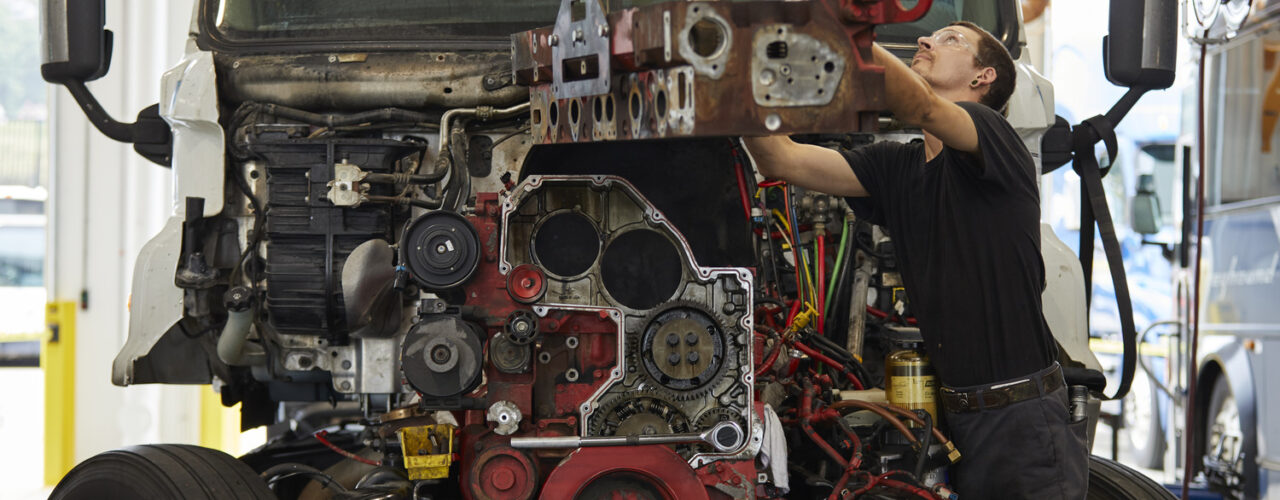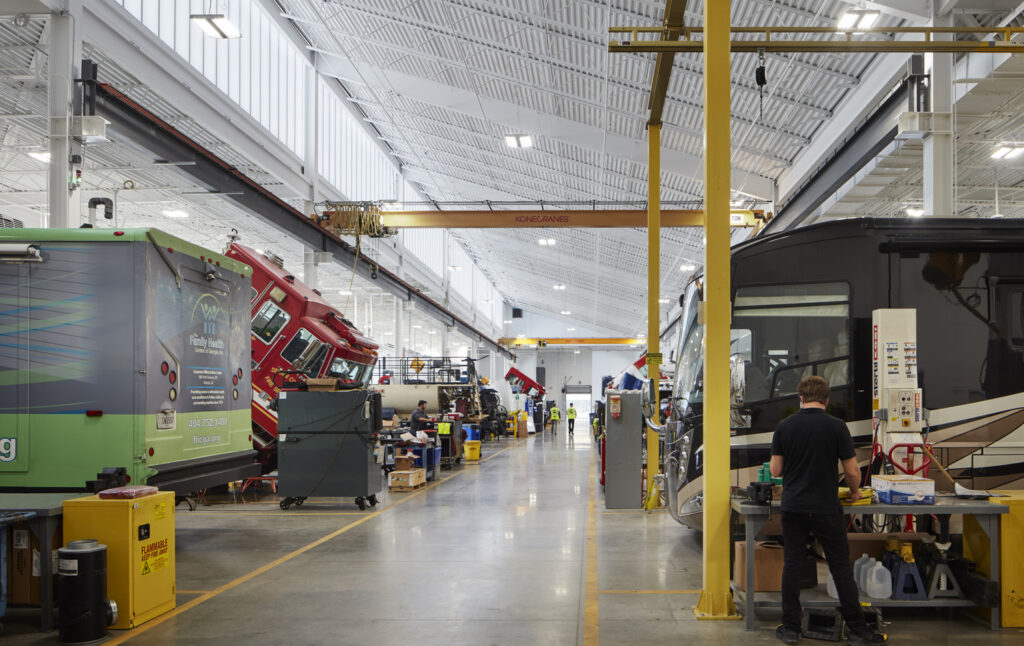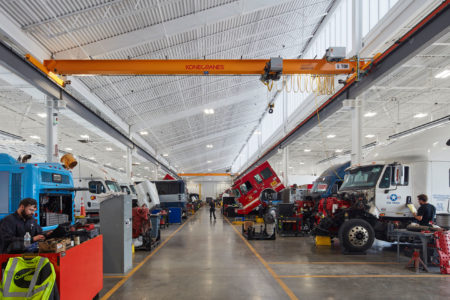The Mechanics of Designing Fleet Vehicle Maintenance Facilities

RSP’s Ed Hess and David Serrano have five key considerations for designing vehicle maintenance facilities flexible enough to take on the future of the industry.
When RSP designs vehicle maintenance facilities, we start by asking the right questions that walk our clients through the full building process and the human side of the facility. Questions that clients often haven’t considered that get to the operational DNA—the basic building blocks of what the facility needs to run efficiently, flexibly and friction-free. Once that is established, designing a maintenance facility is a lot like assembling an engine—form follows function.
We start with the engine block (that’s the bays, or pistons, where the work gets done). Then we add the drive train (that’s the day in the life of the technicians, field technicians, parts services supervisors and front-of-shop personnel). Next, we integrate the technology (that’s the systems like the fluid delivery, waste systems, tanks, tools, and equipment). And finally but no less critically, we add the touchpoints, and that’s where the customer journey and experience unfold.
The “X Factor”
While it may be easy to see these types of projects as low on design, we take a markedly different tack. We understand (and respect) their complexity; and we draw on our work in retail, workplace interiors and branding to create projects that are as flexible as they are customized, as human-centric as they are efficient, and as essential to recruiting and retaining talented professionals as any corporate headquarters.
The “X Factor” is, of course, flexibility. New technology, alternate fuels and AI are disrupting everything from supply chains and manufacturing to diagnostics, tools and processes. Whatever solution we develop today must prepare us for whatever vehicle rolls into the shop tomorrow. Over the years, we’ve identified five main elements that go into making it all happen.

Start with the Basics
Space design is the beating heart of everything we do on a vehicle maintenance facility. Adjacencies and a fluid flow are critical, of course, but we typically start with the working specifications of the fleet dynamics and the required systems to support the role of the service center, whether the team is working on CNG/LNG vehicles, EVs or anything in between. Those specifications, once confirmed, become the building blocks of a successful design; and we end up with a configuration that allows techs to work seamlessly with the right technology, tools and support to get the job done fast and well.
Reduce Footsteps
It’s all about making things easy and friction-free. We design each bay as a self-contained “surgical suite” with technology and tools within reach. Fewer steps and fewer movements mean less inefficiency, which goes straight to the bottom line. We position supervisors as “rocks in the stream” to provide support when necessary. And we help make the basic—like fulfilling repair orders or getting parts to the techs—as seamless as possible.
Make Techs the Star of the Show
Acquiring and retaining top talent is a growing challenge for the industry. By focusing on “day in the life” scenarios of techs, supervisors and office workers—the customer journey we mentioned earlier—we get the best understanding of how we can support their jobs by design. We like to put the easy before the hard, improving employee well- being through welcoming amenity spaces suited specifically to tackling the work at hand. We look at circulation patterns and make those shorter and easier too.
Integrate Technology
Technology differentiates an old school garage from a 21st-century facility. At the same time, we stay mindful of the bottom line and focus on the elements that make logistical and financial sense. Dynamometers, new and waste fluid systems, wash and waste treatment systems, the ability for newer vehicles to communicate remotely with fleet maintenance before arrival, hands-free technology, handheld devices, automated repair orders and high-tech diagnostics are just some of the elements we consider to future-proof today’s vehicle maintenance facilities.
Make it Flexible. Make it Custom.
There is an art and a science to creating facilities that are custom enough to be exactly what our clients need, but flexible enough to accommodate, even anticipate, evolving technologies and new vehicle types. This is why we ask the questions—to understand operations and the trajectory of our clients’ businesses.
Our goal is to deliver solutions that work today and prepare for whatever comes down the road tomorrow. With the onslaught of new technology and emerging trends, we constantly refine our processes and incubate fresh ideas and new approaches to give our clients the buildings blocks to evolve, grow and address every new challenge.



